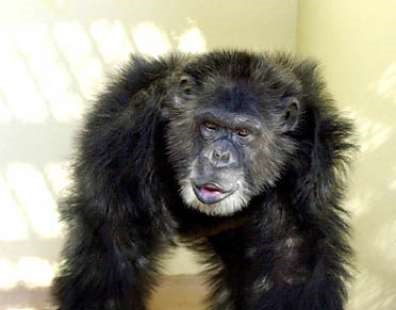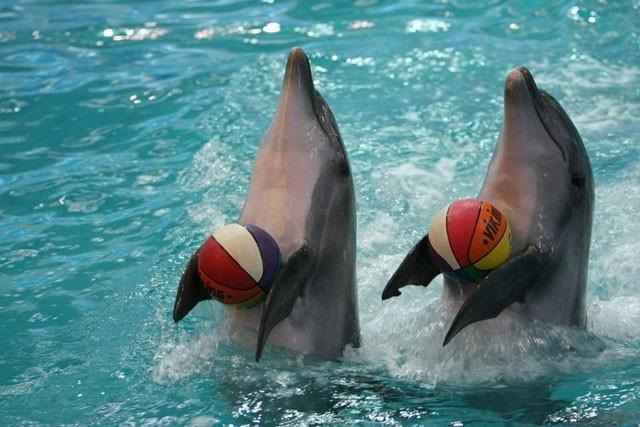What I Learned from Clint the Chimpanzee
Today, I opened the online magazine Aeon and found a new article on Clint the chimpanzee, entitled “The Pointing Ape” by a former colleague of mine, David Leavens.
Clint was a young male chimpanzee who lived in a cage at Yerkes National Primate Research Center in Atlanta for the 24 years of his short life in captivity. He died in 2004.
Clint’s contributions to science were enormous: As Leavens acknowledges, he was the first chimpanzee to have his genome sequenced, and he participated in years of studies that revealed not only how chimpanzees use pointing as a form of referential communication, but how they use computers to complete cognitive tasks, how they employ gestures, and how they communicate.
As a young faculty member at Emory University in the 1990s, I had the honor of working with Clint for many months on the very same computer studies described in the Aeon article. And, yes, he pointed to all kinds of things: from the grapes he wanted … to the juice bottle I often carried around … and to my shoes. He loved shoes.
But his impact on me far exceeded our working together as research subject and investigator. Indeed, Clint taught me a lot more about our own species than about his.
Clint’s “enclosure” consisted of an indoor/outdoor barren cement room with grating on the front. He could stick his fingers through the grating, but that was all. He could climb on a shelf and interact with the two female chimpanzees he shared his cage with. He could also hear the other chimpanzee inmates down the row of cells at the Yerkes Main Station where I saw “caretakers” hosing down and yelling at chimpanzees who “acted up” and where, in the cell next to Clint, an older female chimpanzee who had been in solitary confinement experiments early on in her life sat and punched the side of her head incessantly. Insanity in an insane asylum, where 46 chimpanzees still remain.
Yet Clint managed to live there and still be an incredibly charming, engaged and intelligent being with the people in the white coats on the other side of the bars of the cage.
I told myself that someday I would work to get him out of there and into a sanctuary. But a few years later, when I revisited Yerkes, I discovered that this would no longer be possible. When I walked into a colleague’s lab and opened a cupboard, there sat a large glass jar with a brain floating in fluid. And the label on the jar was “Clint.” Was this the Clint, I asked? The Clint I had known and loved? And yes, I learned that his heart had failed. My own heart stopped, too. I ran into the parking lot, got into my car and cried. And I never returned to Yerkes after that day.
To me, the real story of Clint is not about whether he could point to a grape or use a computer. It is about the tragedy of his life and the lives of all the other great apes who are confined to cells for the purposes of research. In the end, that’s the only story that really matters.
I’m so glad that great apes are gradually being moved from research labs to sanctuaries thanks to new U.S. policies on the use of great apes in research. It came too late for Clint. But we can continue to work in his name for the rights of other animals to be the authors of their own destiny: elephants in zoos, whales in entertainment parks, tigers at roadside attractions, “dancing” bears on leashes.
Yes, Clint taught us many things about his own species, but most of all he taught us about our own species and about how we behave toward his and toward so many others.


